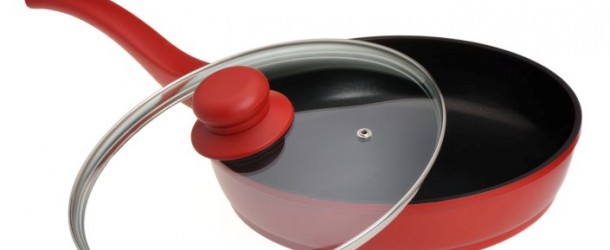EarthTalk®
E – The Environmental Magazine
Dear EarthTalk: I’ve read conflicting reports about the dangers of non-stick cookware. I have a set of older non-stick pans and am not sure if I need to replace them. Are they harmful to use, particularly if they have a few scratches? — Miriam Jones, Montgomery, AL
Non-stick cookware has been around since 1960s when the first Teflon-coated “Happy Pan” appeared on store shelves. Cooks and dishwashers have loved the pans ever since, given how easily they clean up since no food residues can stick to the slippery surface coating. The issue with non-stick cookware emerged when people began to worry about whether we were ingesting or breathing in trace amounts of the chemicals used into the production of the non-stick coating every time we ate a meal cooked in one of the pans. Indeed, 98 percent of Americans carry trace amounts of the main chemical of concern, PFOA (Perfluorooctanoic acid), around in our bloodstreams every day. This synthetic “fluorosurfactant” has been used in the manufacturing process of the coating on non-stick cookware and many other products (microwave popcorn bags, Gore-Tex jackets, medical implants, etc.) for decades.
“The EPA classifies PFOA as carcinogenic in animals, causing testicular, pancreatic, mammary and liver tumors in rats,” reports Melissa Breyer of the website Care2. “Workers exposed to PFOA have increased risks of dying from or needing treatment for cancers of the pancreas and male reproductive tract.” She adds that numerous studies have shown “that PFOA alters reproductive hormones in the male, causing increased levels of estrogen and abnormal testosterone regulation and that PFOA or chemicals that break down into PFOA damage the thyroid gland.”
Of course, the risk of exposure is very low for a person frying an egg at home than for a factory worker manufacturing PFOA. In 2007, Consumer Reports tested non-stick pans from several manufacturers and found harmful airborne emissions of PFOA to be minimal. “The highest level was about 100 times lower than levels that animal studies suggest are of concern for ongoing exposure to PFOA,” reported Consumer Reports. “With the aged pans, emissions were barely measurable.”
Regardless, most new non-stick cookware available today is not made using PFOA. In 2006 the U.S. Environmental Protection Agency (EPA) called on companies making non-stick coatings to voluntarily phase out their use of PFOA in cookware applications by 2015. Teflon and other non-stick pan brands will continue to be available, but consumers can rest assured that they are made with safer, less environmentally persistent processing agents than PFOA.
Meanwhile, other manufacturers are working on alternative forms of non-stick cookware using ceramic or silicone coatings. But a 2009 survey of eight such alternatives by Cook’s Illustrated did not give any of the new choices out there especially high marks. “Not a single one of these ‘green’ pans was without flaws,” said the magazine. “In some, delicate eggs burned, thin fish fillets stuck, and steak charred (not problems for Chic Vegans!!!) on the outside while remaining raw within. Others stained or transferred heat inconsistently.” Some pans accumulated the browned bits known as fond (we are not “fond”) when steak was seared, indicating unwanted sticking power.
For those who would rather just avoid non-stick pots and pans altogether, tried and true cookware like cast iron, aluminum, copper and stainless steel each get high marks for even heat distribution and for holding up well at high temperatures and frequent use.
.
CONTACTS: Care2, www.care2.com; Consumer Reports’ Kitchen Cookware, www.consumerreports.org/cro/kitchen-cookware.htm; Cook’s Illustrated “Green Skillets,” www.cooksillustrated.com/equipment/overview.asp?docid=20400.
EarthTalk® is written and edited by Roddy Scheer and Doug Moss and is a registered trademark of E – The Environmental Magazine (www.emagazine.com). Send questions to: earthtalk@emagazine.com. Subscribe: www.emagazine.com/subscribe. Free Trial Issue: www.emagazine.com/trial.
Photo credit: Hemera Collection
